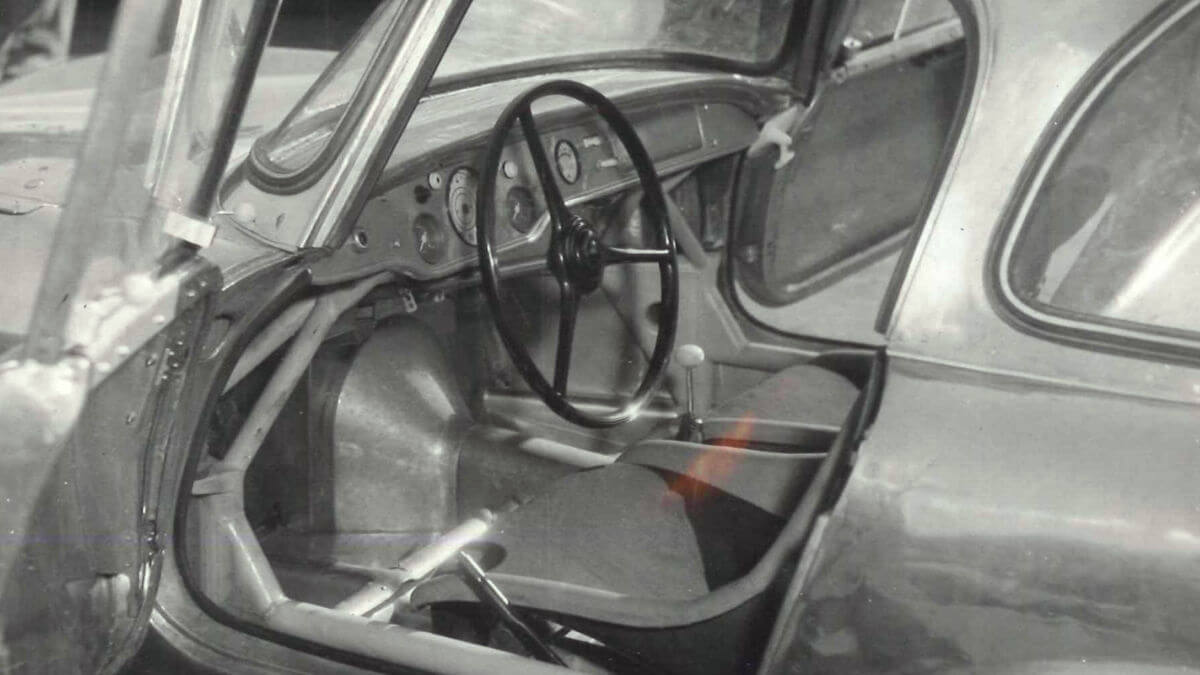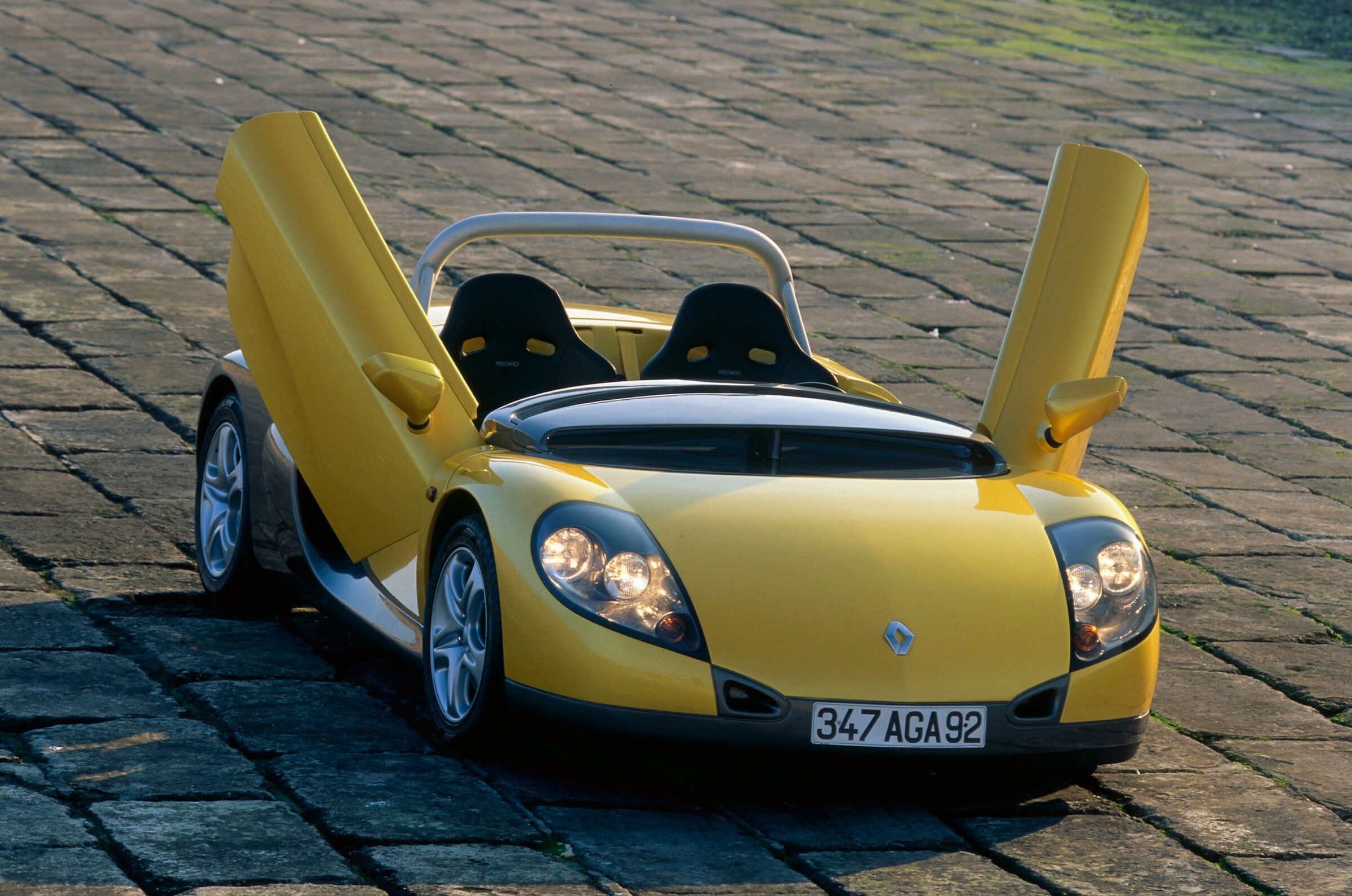Škoda 1100 OHC Coupé
In the 1950s, Škoda was successful in international motor racing. Under the internal abbreviation 968, a sports car with tubular frame was developed from 1956. For the best possible weight distribution, the engine was mounted just behind the front axle and the transmission on the rear axle. The first two examples of the 1100 OHC were given an open roadster body made of fiberglass-reinforced plastic. They served as racing cars for the factory drivers Miroslav Fousek, Václav Čížkovský, Jaroslav Bobek, Václav Bobek senior and Josef Vidner in various events in Czechoslovakia and other Soviet countries. Škoda was no longer able to attend international racing events due to the difficult political relations between the West and the East. Consequently, the planned start at the 24 Hours of Le Mans was also cancelled.
Coupé with better aerodynamics
Both roadsters have survived to the present day. The situation is somewhat different with the two coupé versions of the 1100 OHC from 1959 and 1960, which were created to be even more successful with improved aerodynamics. As in the roadster, a 1.1-liter four-cylinder engine with 67.7 kW/92 hp provided the propulsion. Its aluminium block and crankshaft were taken from the standard Škoda 440 “Spartak”. However, the Czech engineers optimized both the combustion chambers and the overhead camshaft valve train. Added to this were two carburetors, ignitions magnetos from Scintilla Vertex and a dual ignition system. For the five-speed transmission, there were different ratios available depending on the track characteristics. Thus, the relatively low power combined with a curb weight of only 555 kilograms and good aerodynamics allowed up to 124 mph topspeed. A dual-circuit braking system with drums mounted at the gearbox at the rear provided deceleration.


















Both coupés were sold
The two Škoda 1100 OHC coupés were used in motorsport from 1960 to 1962. For the 1963 season, the category of cars up to 1.1 liters displacement was dropped, which would have meant competing against cars with significantly more displacement. In 1966, both coupés were sold to private customers. Before that, at the request of Hanuš Hrabánek, the engine of the first coupé was replaced by the then new Felicia engine. Škoda exhibited the racing engine in the vocational school in Mladá Boleslav. The second owner crashed the coupé in a highway near Mladá Boleslav and the car caught fire. The rear axle including the transmission was removed from the remains. Initially, these parts were part of the inventory of the National Technical Museum in Prague. About 15 years ago they were given to the Škoda Museum. The damaged tube frame together with the front axle, brakes and pedals belonged to a private collector until 2014 and was finally acquired by Škoda.
Second coupé still exists partially
Meanwhile, the second 1100 OHC Coupé fared even worse. It passed through many hands and belonged, among others, for two years to the family of Michal Velebný, the current head of Škoda’s museum workshop. By that time, a 1.3-liter engine from the Octavia of the time had already been installed. As the family grow, the coupé had to give way to a 1000 MB. Subsequently, it suffered various accidents and received various new bodies. Until the end of the Cold War it took part in hill climbs and other events. Today it belongs to a Czech car collector, but is neither complete nor roadworthy. At Škoda, meanwhile, the plan matured to recreate the first coupé from the collected parts. All technical components turned out to be in surprisingly good condition. Due to the changes in the regulations, Škoda had only been able to enter the coupés in five racing events.


















Restored since 2014
Building a drivable car from this conglomeration of parts sounds easier than it was. The mechanics at the Škoda Museum already had many years of experience with the two roadster versions. It was also helpful that the Škoda archive had preserved the complete technical documentation from the construction of the vehicles. It explains all production steps and contains technical drawings of the installation of all components. Reconstruction work on the tubular frame chassis began back in 2014. This involved constructing new fuel tanks and radiators based on original drawings. The plan was to display the chassis in the museum alongside the roadworthy roadster starting in 2015. In the end, however, the decision was made to resurrect the coupé in its entirety. For this purpose, it was necessary to rebuild the aluminium body designed by Jaroslav Kindl. At that time, the hand-formed sheet metal was welded or riveted, depending on the location.
Reconstructed with computers
For the reconstruction, the Škoda Museum worked closely with colleagues from Škoda’s prototype construction department. Using 1:1 scans of the two-dimensional drawings, a three-dimensional mesh was created there. After optical reworking, a 3D model of the car could be viewed on the screens. Individual elements and assemblies were corrected again and again until everything fit. For this purpose, the virtual model was compared with historical photos and drawings. Afterwards, scaled-down models and front and rear sections on a scale of 1:1 were created from plasticine. 0.8 to 1.1 millimeter thick aluminium sheets were then manually formed into the desired body design. The two original coupés were initially painted blue. From mid-1962, the color changed to red. This color is now also worn by the reconstructed car.
Images: Škoda
Sie sehen gerade einen Platzhalterinhalt von Standard. Um auf den eigentlichen Inhalt zuzugreifen, klicken Sie auf den Button unten. Bitte beachten Sie, dass dabei Daten an Drittanbieter weitergegeben werden.
Weitere Informationen



